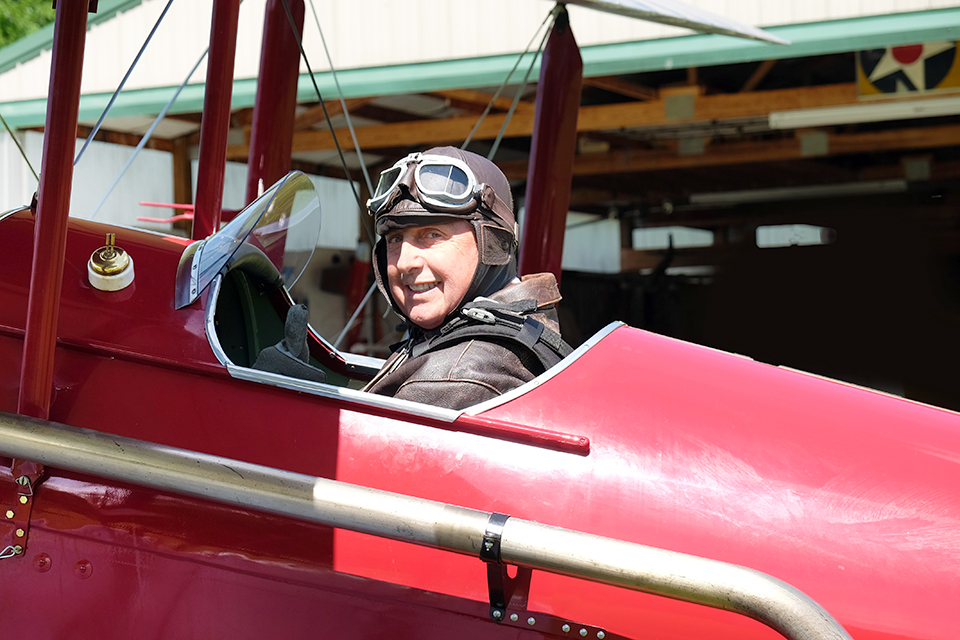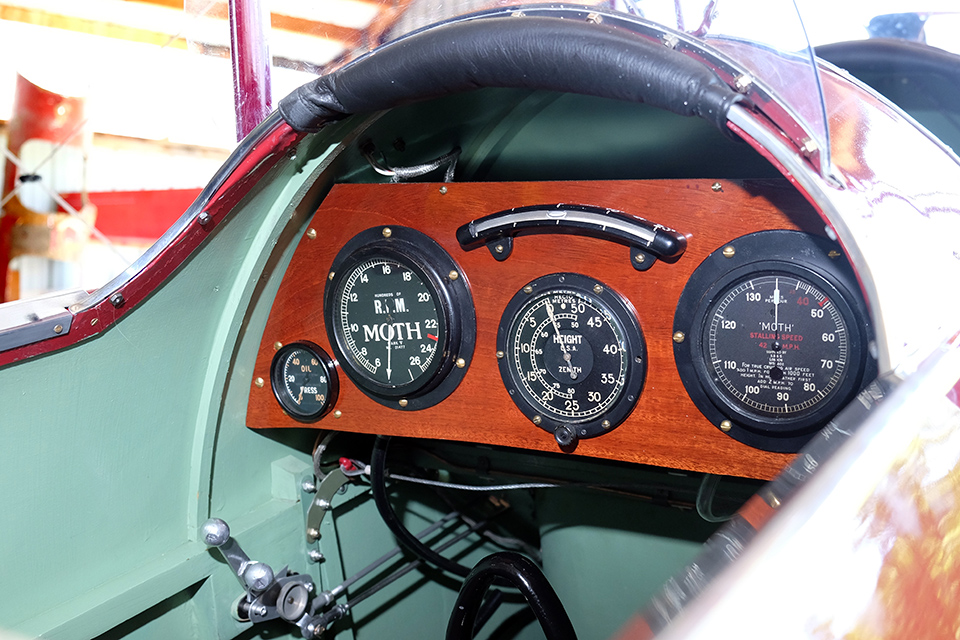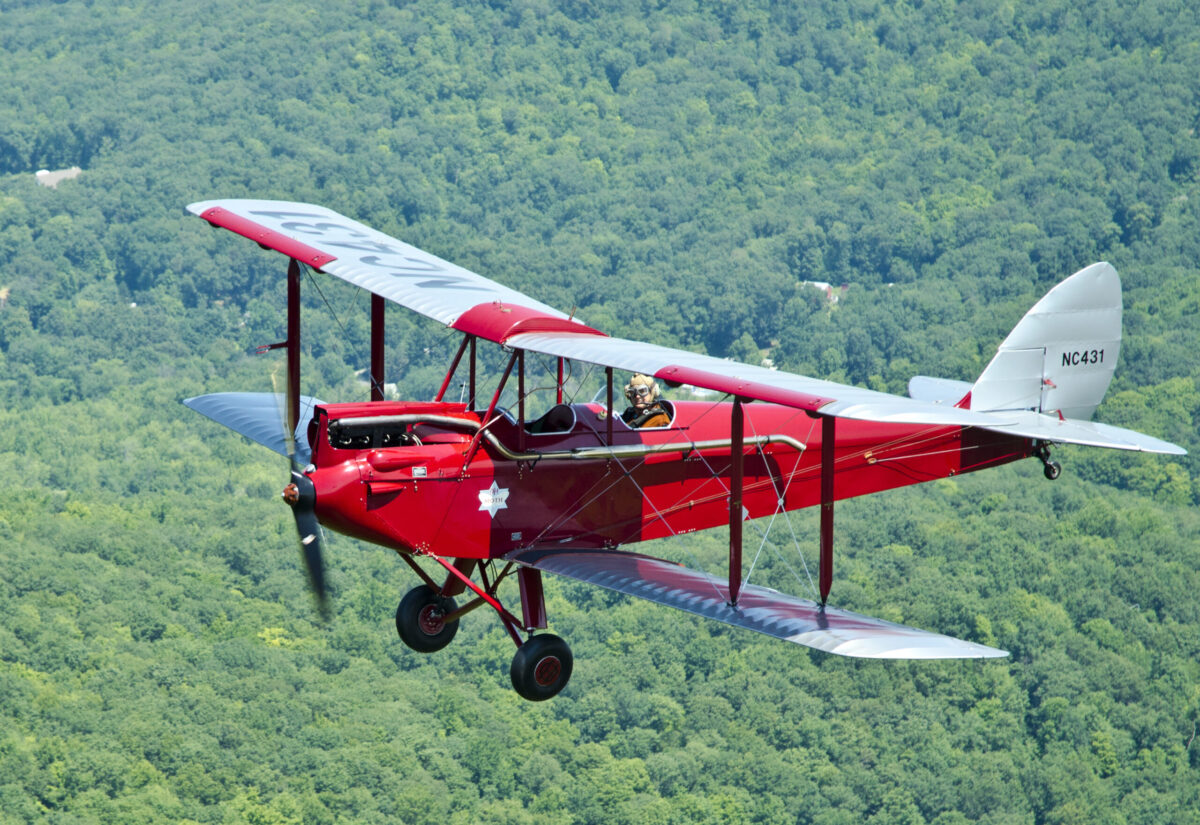The de Havilland airplane aficionado recently returned a 1928 Gipsy Moth to flight, adding to his existing flock of Moths.
In 1995 Michael Maniatis completed a replica of a 1927 de Havilland DH.71 monoplane racer in his second-floor loft in midtown Manhattan. Maniatis and friends disgorged the fuselage and wings through a window and onto the roof of a rented box truck at 3 a.m. The tiny, overpowered, tail-heavy, utterly unstable airplane tried to kill him pretty much every time he flew it.
Since then, Maniatis has built a replica de Havilland Moth Major, restored a DH.82 Tiger Moth and in June completed the restoration of a DH.60 Gipsy Moth. He also owns a de Havilland Chipmunk and a second Gipsy Moth with a steel-tube frame, which he bought as a pattern airplane for his current project. (No wood-frame Gipsy Moth plans and few parts lists exist, so Maniatis needed a three-dimensional blueprint.)
Maniatis is an experienced pilot, having flown in the famous Old Rhinebeck Aerodrome’s summer weekend airshows for several years. He also recently spent two summers flying as a member of the Geico Skytypers SNJ skywriting team.

The 1928 Gipsy Moth was the airplane that—at least in Britain, Europe, Australia and Canada—made flying possible for Everyman. It was comparatively cheap (the equivalent of $50,000 in today’s dollars), simple, reliable and easy to maintain, and it offered performance that set speed, distance and altitude records in its class. It would be nine years before the Piper Cub lowered the bar.
The Gipsy Moth was preceded by the Cirrus Moth—featuring the very same straight, unstaggered wings and plywood-box fuselage but with a four-cylinder engine created from half of a World War I Airdisco V-8, which was a modified Renault car engine. When designer Geoffrey de Havilland saw that Airdisco/Cirrus engine parts were becoming increasingly rare, he had engineer Frank Halford create an all-new engine, the Gipsy, that the de Havilland company would manufacture. Halford went on to design the immensely complex 24-cylinder, sleeve-valve Napier Sabre engine as well as de Havilland’s Goblin and Ghost turbojets.
Like Lindbergh’s run-forever Wright Whirlwind, the Gipsy was at least as important as the airframe that carried it. The engine initially displaced just 5.23 liters in its four air-cooled inline cylinders and weighed 300 pounds. The Gipsy was service-tested at 135 hp in the DH.71 racer and then derated to 100 hp for production. With a 5.5-to-1 compression ratio and the simplicity of a farm-tractor motor, it had no trouble carrying Amy Johnson solo from England to Australia in 1930 and setting other distance records on a near-monthly basis.
Many Gipsy Moths ended up in Canada. Some were built there by de Havilland Canada, which would go on to manufacture Beaver and Otter bushplanes and Dash 7 and 8 turboprop commuterliners. Maniatis’ restored Gipsy Moth flew most of its life in Canada, though it was built in England.
But first it spent two years in Michigan, owned by five-time Gold Cup champion speedboat racer and builder Gar Wood, a fact that Maniatis learned to his surprise only after buying the project in 2014. Wood kept a second Gipsy Moth at his home in Florida and would go on to own and fly a Grumman Duck amphibian. Maniatis acquired Wood’s original registration number, N431 (which in the 1930s would have been NC431).
A well-known Canadian de Havilland expert, the late Watt Martin, had started restoration of the Gipsy Moth, and the wings and empennage were in good shape but uncovered. Only the lower fuselage box was complete, so Maniatis’ major restoration task was fabricating the entire curved upper deck and the cockpit surround, which turned out to be a substantial job. It was also a challenge to get the multipiece aluminum engine cowling to fit properly, since every Moth was hand-built, with inevitable variations.

Gipsy Moths have easily foldable wings, as do all Moth variants except the Tiger Moth. De Havilland intended the feature to allow owners to save on hangar costs, but it was also touted as a device to make the airplane roadable, assumedly so it could be towed home and stored in a garden shed. Unfortunately, this wore out fragile and expensive airplane tires too rapidly.
The restoration consumed four years, this time inside Maniatis’ de Havilland–jammed hangar at Old Orchard Airpark, a private grass strip in upstate New York near Plattekill that is a hotbed of homebuilding and restoration activity. He flew the Gipsy Moth, resplendent in a cherry-red and gray paint scheme, for the first time in June of this year.
Maniatis was already a talented woodworker with a fully equipped shop when he started his string of de Havilland projects, thanks to his unusual profession: He created fake food and accessories for commercial photography in the days before computer-generated imagery. Few back then knew that much of the succulent food seen in advertising and editorial photography was phony, made out of wood, plastic and other materials so it wouldn’t wilt under hot lights. The juicy, lacquered models could also sell a steak’s sizzle far better than any real steak ever did.
One of Maniatis’ most lucrative products was fake cherries. “Food photographers always needed cherries,” he pointed out, “but when cherries were out of season, they had to be imported from South America, and they looked lousy by the time they got here. I made mine about 15 percent bigger than normal, since bigger is always better, right?” He individually airbrushed them in varying shades of red, with stems of wax-covered brass wire. When Coca-Cola introduced Cherry Coke in 1985, Maniatis was reaping a small fortune from advertising photographers renting his cherries by the day.
Maniatis has at least two projects awaiting him now that the Gipsy Moth is complete and has flown. His Tiger Moth went into the trees after an engine failure during an Old Rhinebeck airshow in 2016 and needs substantial rebuilding, and there are the remains of a little Comper Swift single-seat sportplane still in storage. Maniatis hopes it will prove more benign than his de Havilland racer.
This article originally appeared in the November 2019 issue of Aviation History. Click here to subscribe!





